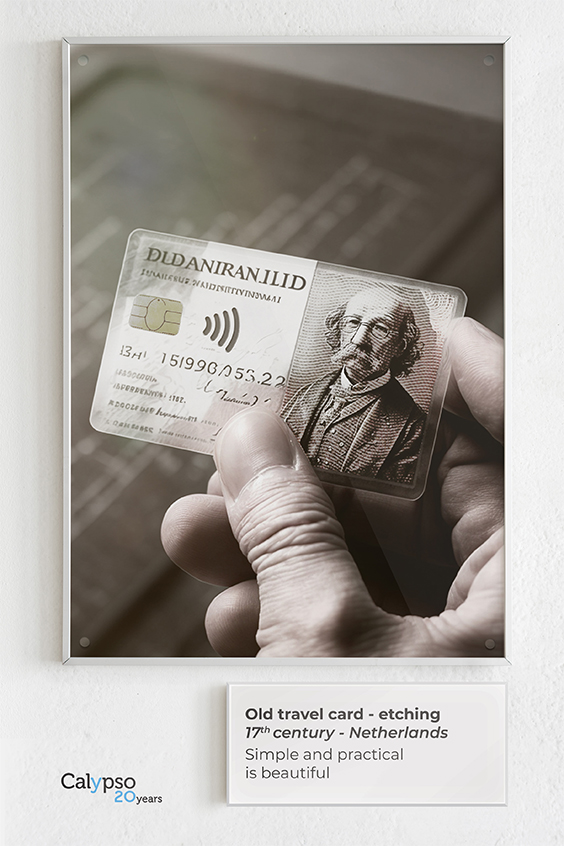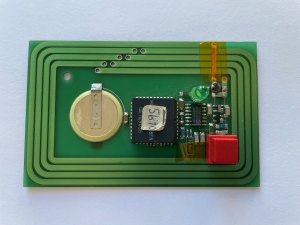CNA 20th Anniversary: simple and practical is beautiful
- By Vappereau Philippe
- In
As many of you know, 2023 is the 20th anniversary year for CNA. To celebrate, we are hosting an exclusive showcase of original artworks that you can discover each month, accompanied by anecdotes that have marked the history of Calypso's development.


 But where did the idea come from to use this technology, which was not at all designed for exchanging data?
It was the CNET (Centre National d’Études des Télécommunications, or the National Center of Telecommunications Studies) in Caen that came up with the idea and registered the corresponding patents.
Today, we must pay tribute to its researchers, who are behind so many of the inventions we use in our daily lives! However, the market for this innovation remained uncertain and credit must be given to the RATP-Innovatron partnership that recognised the potential to develop contactless ticketing.
The partnership acquired the contactless transmission patents that form the basis of the ISO 14443 type B international standard, and developed the principles of the Calypso secure transaction, whose well-known session patent is used by this standard and by many other ticketing technologies too.
Don’t worry though. Even though Calypso was built on the RF ISO B standard, today Calypso works just as well using type A, as it does with type B.
This is the official story of Calypso’s beginnings! Although we’re well aware that in reality it goes back much further, as the works of art we’re exhibiting bear witness! 😏
But where did the idea come from to use this technology, which was not at all designed for exchanging data?
It was the CNET (Centre National d’Études des Télécommunications, or the National Center of Telecommunications Studies) in Caen that came up with the idea and registered the corresponding patents.
Today, we must pay tribute to its researchers, who are behind so many of the inventions we use in our daily lives! However, the market for this innovation remained uncertain and credit must be given to the RATP-Innovatron partnership that recognised the potential to develop contactless ticketing.
The partnership acquired the contactless transmission patents that form the basis of the ISO 14443 type B international standard, and developed the principles of the Calypso secure transaction, whose well-known session patent is used by this standard and by many other ticketing technologies too.
Don’t worry though. Even though Calypso was built on the RF ISO B standard, today Calypso works just as well using type A, as it does with type B.
This is the official story of Calypso’s beginnings! Although we’re well aware that in reality it goes back much further, as the works of art we’re exhibiting bear witness! 😏
